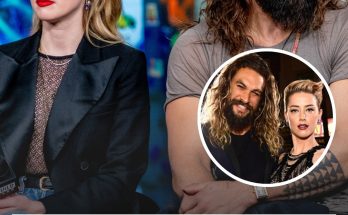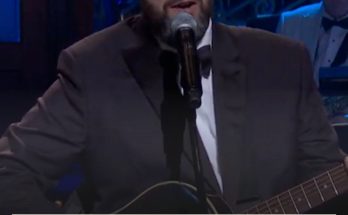
His performance in the Oscar hopeful Queer opposite Daniel Craig has Hollywood buzzing. He’s also fashion’s latest “it” boy, a thinking man, and an incredible dinner companion. Where did this guy come from?
Two years ago, Drew Starkey was eating breakfast in L.A. with Luca Guadagnino, the Italian director behind Call Me by Your Name and Challengers. Starkey was in disbelief. Guadagnino is an Academy Award nominee who’s worked with Tilda Swinton, Timothée Chalamet, and Zendaya. Starkey had spent the past three years on Netflix’s Outer Banks—a wildly popular show (now in its fourth season) that bears little resemblance to Guadagnino’s moody, hyper-stylized films. But the director had seen the actor’s audition tape for an unrelated project and asked him to breakfast.
The topic of conversation that morning: Queer, a movie about a gay heroin addict living in Mexico City in the 1950s, based on the William S. Burroughs novel of the same name. It was Guadagnino’s next project, and he was eyeing Starkey to play opposite Daniel Craig.
“Halfway through the first meeting, I was like, ‘This is amazing, and I don’t really care what comes of it,’ ” Starkey says. “I’m getting to sit down and have deep conversations with a director—an artist—that I really look up to? That’s incredible. The whole time, I was thinking, ‘It’s not gonna happen.’ ”
It happened. After breakfast, he read the book, then reread it a few more times. He and Guadagnino kept talking for two months—a “vetting process”—before Starkey was cast. No formal audition necessary. He lost thirty pounds for the role, and he clearly studied up. Over dinner in New York, Starkey tells me about the relationship that inspired the novel, the “deep, deep longing” that Burroughs “had in real life, with this real person, up until his death.” He says he memorized Burroughs’s prose, effortlessly rattling off a line from one edition of Queer’s introduction by heart. He explains that Kurt Cobain was a disciple of Burroughs.
The movie comes out November 27, and there’s already talk of its Academy Award potential. Meanwhile, the thirty-one-year-old Starkey has become the latest object of the fashion world’s desire, sitting front-row at runway shows and appearing in an ad campaign for the white-hot label Loewe, whose creative director, Jonathan Anderson, designed the costumes for Queer. He joins the ranks of other Loewe Boys, including Josh O’Connor, Mike Faist, and Omar Apollo, who also appears in Queer. “It’s like a really dysfunctional family,” Starkey says with a laugh.
With Queer and the fourth season of Outer Banks and the fashion shows and the ad campaign and the screaming fans at the premieres in cities around the globe, Drew Starkey has entered the white-hot center of the zeitgeist. He is a man in demand.
Dinner with Starkey goes like this: One minute he’s casting his gaze at the table, pausing to carefully consider his words, and the next he’s distracted by a passing Labrador, then doing an impression of a German shepherd, which is effectively Starkey pulling a Blue Steel face and staring intensely into the distance. In other words, it’s unpredictable—and a hell of a lot of fun. We’re having such a good time on this breezy Saturday night in October that our waiter at the Mark Restaurant has to return to our patio table twice before we’re ready with our drink orders. We eventually order off the cuff—Blanton’s on the rocks for Starkey, a glass of Arvine for me.
Starkey looks effortless in a Carhartt jacket, baggy jeans, and black Sambas sneakers. His tightly shorn mullet shows off a tiny silver hoop puncturing his left ear. But he jokes that it’s his “basic bitch” outfit. I tell him he would blend in seamlessly in the Brooklyn neighborhood Bushwick. “Ah, fuck!” he says. “I just need some American Spirits.”
About halfway through dinner, it hits me: Drew Starkey doesn’t know he’s a movie star.
Yes, he has the all-American, leading-man good looks—high cheekbones with a wide, easy grin. There are top notes of James Dean. But he’s not aloof. There’s an openness. He is eager to tell the story of his work. He’s excited. This is all refreshing.
It’s not hard to see why he’s like this. Fame, for him, was no guarantee. “I knew I was gonna work my ass off for it,” he says. As Starkey tells it, he hails from a family of “simple folks of the earth” in North Carolina. His dad is a college women’s-basketball coach and his mom is a school counselor. Starkey graduated in 2016 from Western Carolina University—magna cum laude, no less—with a degree in theater and English, because, as he jokes, “It’s good to have an English degree as a fallback.”
Four years and some odd acting jobs later, he catapulted from working actor waiting tables onto the Netflix superhit Outer Banks, where he plays the troubled, cocaine-addicted Rafe Cameron. From there to Queer was a fast and out-of-the-blue stylistic 180.
Perhaps it’s the English major in him, but he seems to light up when we talk about Queer’s text. He wants to know if I read the book and what I thought of it—for a few minutes, it’s like a Burroughs book club. And he seems to have poured that deep reading of the text into his role. In the film, Starkey plays Eugene Allerton, the object of obsession for Craig’s William Lee. Starkey’s performance is one of raw omnipresence; even when he isn’t physically on the screen, or when he’s appearing across the room without a line of dialogue, the viewer can feel him in every movement.
“You know, we see so many love stories where the two people are so open to one another, and this is a love story where they’re not properly able to communicate that love,” he says. “It’s impossible. And maybe it would be possible in a different time, in a different place, dimension, whatever it might be, but right there, right now, in Mexico City, in this slice of lifetime … it’s just not possible. It’s like both of them are looking around the corner, and it’s so heartbreaking.”
“From the very beginning, a note I got [from Guadagnino] was that there’s love underneath the surface of all this,” he adds. “There’s love there, so I led with that.”
This article appeared in the Winter 2024 issue of Esquire
subscribe
The word Starkey uses to describe the link between Lee and Allerton is longing. That intangible yet palpable thread, all the love that lies unexpressed, just beneath the surface. “I mean, I remember watching the movie, being like, ‘Come on. Come on!’ ” he says.
It’s the scenes in which that love is expressed physically that have people asking questions of him—namely, about the sex between him and Craig. Their intimacy is urgent and imbued with a certain desperation; Guadagnino leaves little to the imagination. Starkey is a good sport when I bring it up. Craig is “easy to work with,” he says with a smile. Still, he’s grown tired of answering questions about this aspect of the movie. He compares talking about it so often to writing a script. At a certain point, the same old questions get the same old answers, and Starkey admits he self-edits his response: Craig was a very giving scene partner; he took Craig’s lead both on- and off-screen; all the rolling around together felt like “interpretive jujitsu.”
“It’s like a game of telephone with yourself,” he says.
To achieve this intimacy, Craig and Starkey had to get to know each other quickly. They were put in dance rehearsals to prepare for a scene in which the two characters are tripping on ayahuasca in a jungle in South America, rolling around in dirt and coffee grounds (which sparked an allergic reaction in Starkey). I ask Starkey whether he tried ayahuasca in anticipation of the scene. He says he hasn’t—yet. But maybe he will one day under the right circumstances, when it’s time to “face his demons.” The choreographers had a word for all these movements, which were like poetry, according to Starkey. He demurs when I ask what the word was. He wants to keep it to himself and turns shy when I ask why. “Because, I don’t know, it feels like they’re for us.”
Later in the evening, Starkey mentions that he’s an overthinker, almost to the extent that he had trouble being fully present in these moments with Craig and with Guadagnino. Starkey is a man who clearly feels deeply but seems to doubt his ability to do so. “I have that all the time in my life, when I’m in a moment where there should be quote-unquote ‘feelings,’ ” he says. “Do I feel as deeply as I am able to?”
It’s a rhetorical question, and I’m surprised—I even ask him to clarify—because Starkey seems to feel it all. He’s a man who holds on to things, takes nothing for granted, and appreciates the moments and the people who helped him reach this point. He expresses gratitude for his middle school theater teachers, whose names he still remembers. He tells me about his nervousness and disbelief during the first days shooting Queer. He shares a story about walking through Central Park at two in the morning with his brother years ago, sipping liquor from a brown paper bag, and how it all felt so uncomplicated. He understands the singularity of his position right now, and he’s grateful.
Starkey doesn’t have much of a sweet tooth, but he does love ice cream and a good milkshake. I suggest profiteroles for dessert. His response ensures we order them: “What is that? That sounds like a medication. Like, ‘Yeah, I’m gonna give you a thirty-day supply for profiteroles.’ ” And his delighted surprise when they come out is worth it: “What the fuck? Shit, that’s wild.”
We’re the last table remaining outside, and though he’s a self-proclaimed night owl, his jet lag from traveling between L.A., Europe, and New York becomes visible. Between bites of profiteroles, he’s stifling yawns. When I ask if he’s tired, he jokes, “No, this is just my personality.” We talk about music. He grew up on Led Zeppelin, proclaims that “Jimmy Page is god,” and wants to get Oasis tickets but doesn’t want to “be the guy to go through Liam or Noel” to get them, fearing the Gallagher brothers would say—and this part is in a spot-on, thick Manchester accent—“I don’t give a fack who ’e is.”
He pulls up a video of an early-2000s Kings of Leon performance on his phone, which is caseless, because he lets the universe tell him when it’s time to get a new one based on whether it breaks or not. “They’re cool as fuck,” he says. We talk about family—after this dinner, he’ll meet up with his brother and sister (the latter of whom he brought to the photo shoot for this story). We talk about what’s next.
Starkey insists he never wants to get too comfortable. “I’m in a place where this is uncharted waters for me, having some type of control over what I do next,” he says. “I’ve always just been a working actor, trying to find work. Maybe shit that scares me, maybe that’s what I’ll do.”
If Queer is any indicator, the shit that scares him is the best kind—I can’t help but hope he finds himself terrified.
Opening image credits: Sweater ($390) by Guess USA; trousers ($1,950) by Valentino; loafers ($1,200) by Prada; necklace ($220) by Noma; bracelet ($11,600) by Tiffany & Co.; Juste un Clou ring ($2,850) by Cartier; signet ring ($300) by Lagos.
Editor in Chief: Michael Sebastian
Writer: Trishna Rikhy
Photographer: Zackery Michael
Stylist: Heathermary Jackson
Groomer: Melissa DeZarate
Design Director: Rockwell Harwood
Visuals Director: James Morris
Executive Producer, Video: Dorenna Newton
Executive Director, Entertainment: Randi Peck








